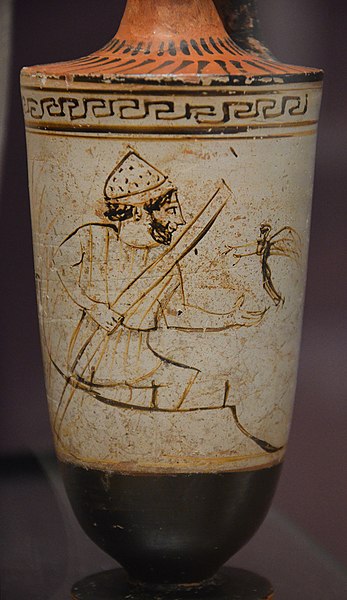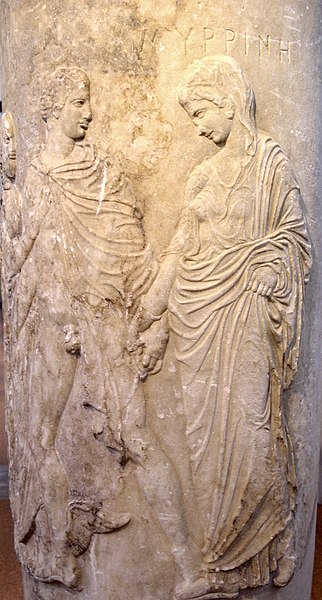In Greek mythology, Charon or Kharon is a psychopomp, the ferryman of the Greek underworld. He carries the souls of those who have been given funeral rites across the rivers Acheron and Styx, which separate the worlds of the living and the dead. Archaeology confirms that, in some burials, low-value coins known generically as Charon's obols were placed in, on, or near the mouth of the deceased, or next to the cremation urn containing their ashes. This has been taken to confirm that at least some aspects of Charon's mytheme are reflected in some Greek and Roman funeral practices, or else the coins function as a viaticum for the soul's journey. In Virgil's epic poem, Aeneid, the dead who could not pay the fee, and those who had received no funeral rites, had to wander the near shores of the Styx for one hundred years before they were allowed to cross the river. Charon also ferried the living mortals Heracles and Aeneas to the underworld and back again.

Attic red-figure lekythos attributed to the Tymbos painter showing Charon welcoming a soul into his boat, c. 500–450 BC
Charon and his boat on a funerary relief, ca 320s BC, KAMA.
Charon as depicted by Michelangelo in his fresco The Last Judgment in the Sistine Chapel
In the Divine Comedy, Charon forces reluctant sinners onto his boat by beating them with his oar. (Gustave Doré, 1857).
Psychopomps are creatures, spirits, angels, demons, or deities in many religions whose responsibility is to escort newly deceased souls from Earth to the afterlife.
Relief from a carved funerary lekythos at Athens: Hermes as psychopomp conducts the deceased, Myrrine, a priestess of Athena, to Hades, c. 430–420 BC (National Archaeological Museum of Athens)





